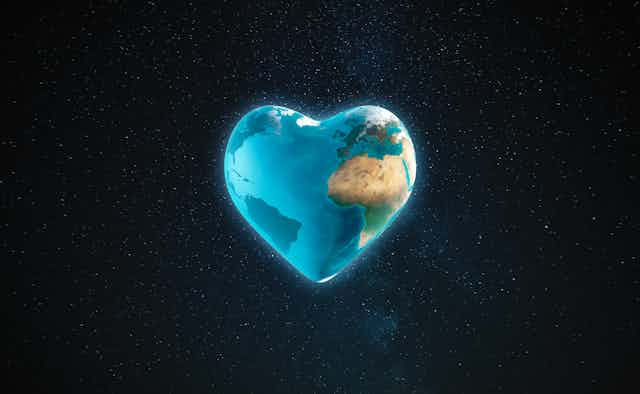At the recent launch of his book on climate change, Prince Charles observed that:
We might also be more inclined to think about the longer term if we were more aware of what is happening around us. Perhaps daily weather forecasts could include a few basic facts about the Earth’s vital signs, or details of where climate change is increasing the likelihood of damaging weather?
Using a few “vital signs” to raise public awareness of the planet’s state of health is a good suggestion. These signs could provide people with a meaningful description of the climatic changes that are underway. They could also provide a common basis for international responses to climate change. The recent Paris Agreement, for example, commits governments to come together every five years to review their pledges to reduce greenhouse gas emissions. It would be helpful if they shared common perceptions of what is happening in the climate system.
Temperature isn’t the whole story
At present, we have only one vital sign: global surface temperature. Its rise is driven primarily by the elevated concentration of atmospheric carbon dioxide, and it is widely used as a measure of the size of the problem the world is facing. Temperature goals have been used to coordinate the preparations of scientists and diplomats for many international negotiations, and the now famous 1.5°C and 2°C goals framed the groundbreaking agreement reached in Paris.
The world is now focused on reducing emissions and on coping with the changes that are already occurring. But global surface temperature by itself will not serve as well in this second phase as it doesn’t describe all that happens in the climate system.
Of the additional heat trapped by elevated greenhouse gas concentrations, more than 90% goes into the ocean. The total heat content of the ocean, from the surface to depth, is thus a more fundamental measure of climate change. The additional heat also causes ice to melt, meaning the states of glaciers, ice sheets and sea ice are useful measures of change, but they are not related to global surface temperature in a simple way. Meanwhile any assessment of how global warming will actually affect people’s lives requires measures of local and regional change.
We therefore need a richer picture of the climate’s behaviour, conveyed by a basket of indicators. The situation is no different to medicine, central banking or any other issue where people must diagnose systems of great complexity in order to understand what is at stake and to make decisions. Some might say following more than one indicator at a time could be confusing. Yet a doctor starts every appointment by checking many different vital signs – blood pressure, weight, heart rate, cholesterol and so on. We know that body temperature alone doesn’t tell us all we need to know about our health.
Putting all the data to work
Today’s satellites and observational networks are ready to support the creation of vital signs. They keep track of the frequency and severity of extreme weather events around the world. Land surface temperature and rainfall have been recorded routinely since the 19th century and now satellites give us the global picture.
Satellite instruments also measure changes in the Arctic and Antarctic and monitor global sea level with exquisite precision. A worldwide network of observatories is collecting measurements of atmospheric carbon dioxide and hundreds of other greenhouse gases.
For vital signs to be used internationally as a common benchmark, we’ll need global agreement on who generates, certifies, and sponsors them. This may take some time given there exists a constellation of observing groups and supporting agencies for each potentially relevant dataset. For example, sea surface temperature is monitored by ships and satellites from many different countries, and an international collaboration provides a network of nearly 4,000 underwater robotic floats that measure the heat content of the upper ocean and increasingly the deeper ocean too.

Several UN and other international agencies, including the WMO, IPCC and the UN’s climate secretariat, are working to define by the end of 2017 a small number of vital signs – maybe five or six – that will give a better overall description of climate change.
Planetary vital signs, by conveying common perceptions of climate change, could help international leaders agree on coordinated, global actions. They could alert people to the risks of climate change and move local leaders to play their part. And they would let voters see how their leaders are protecting them from climate risks.
But to make it all work, the planet’s vital signs will need to become as familiar as the weather report.

